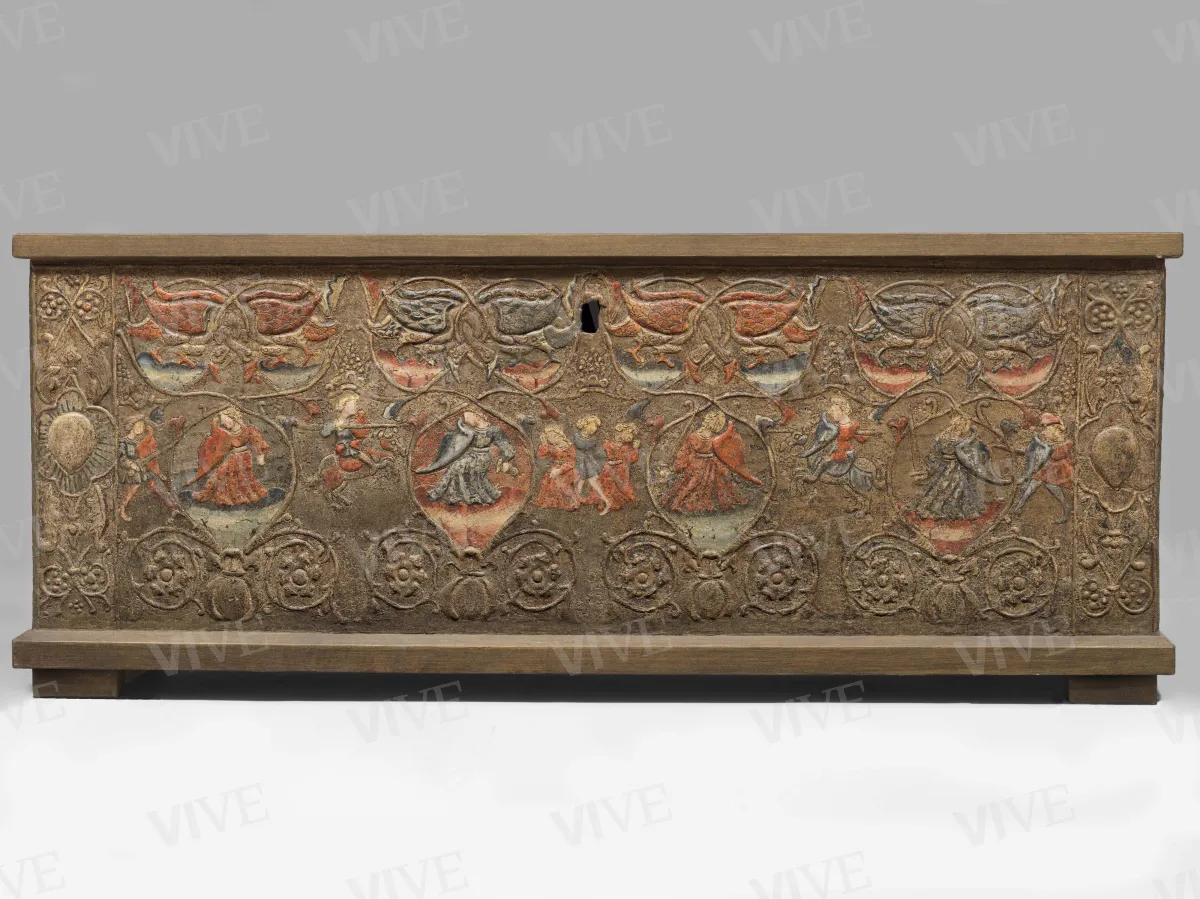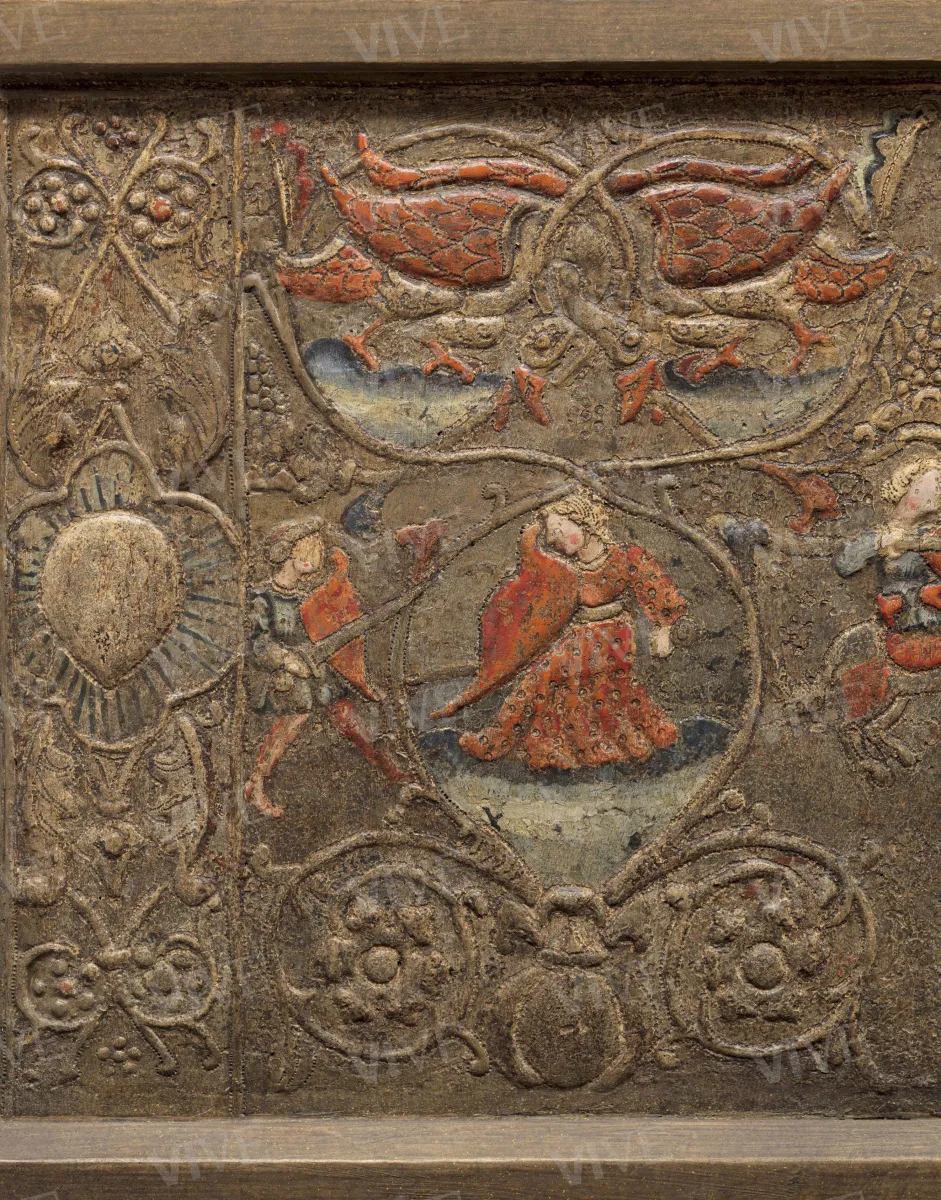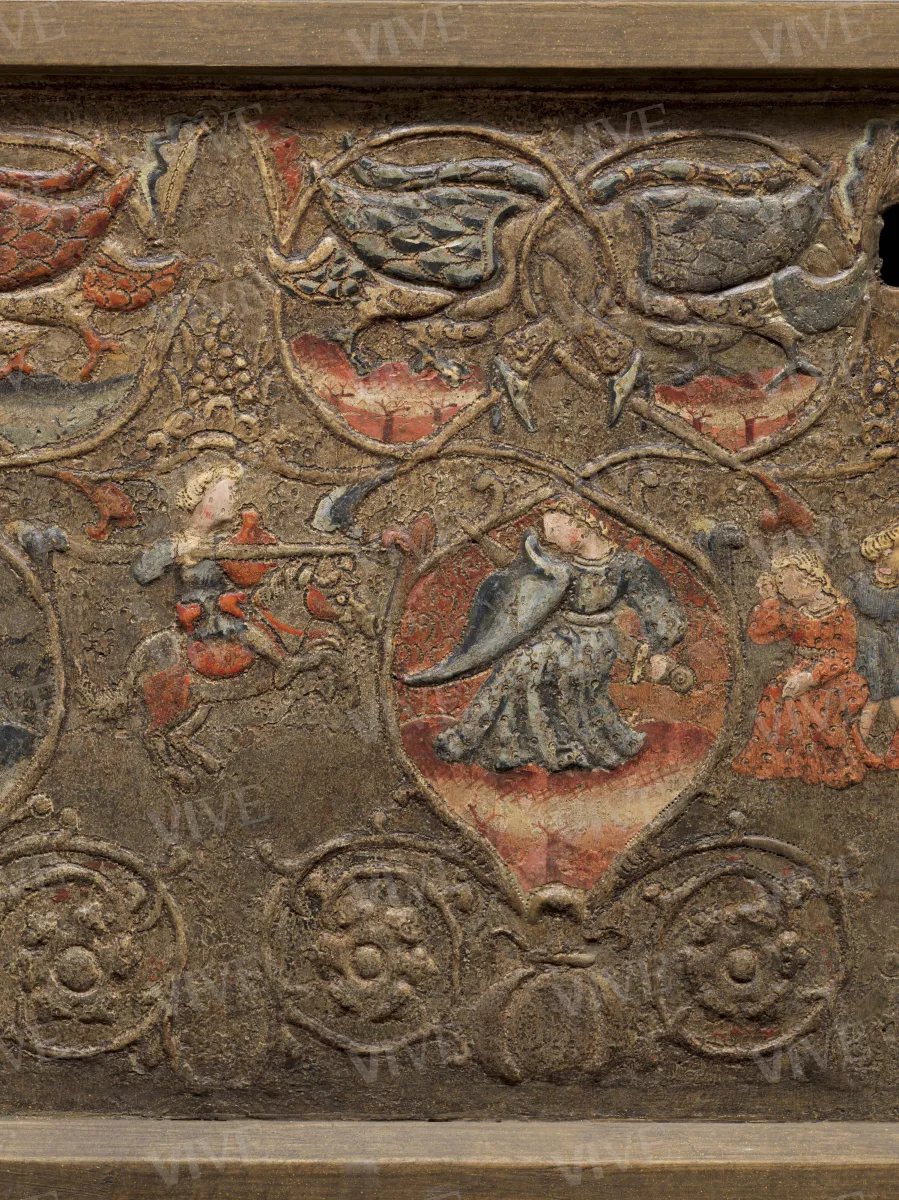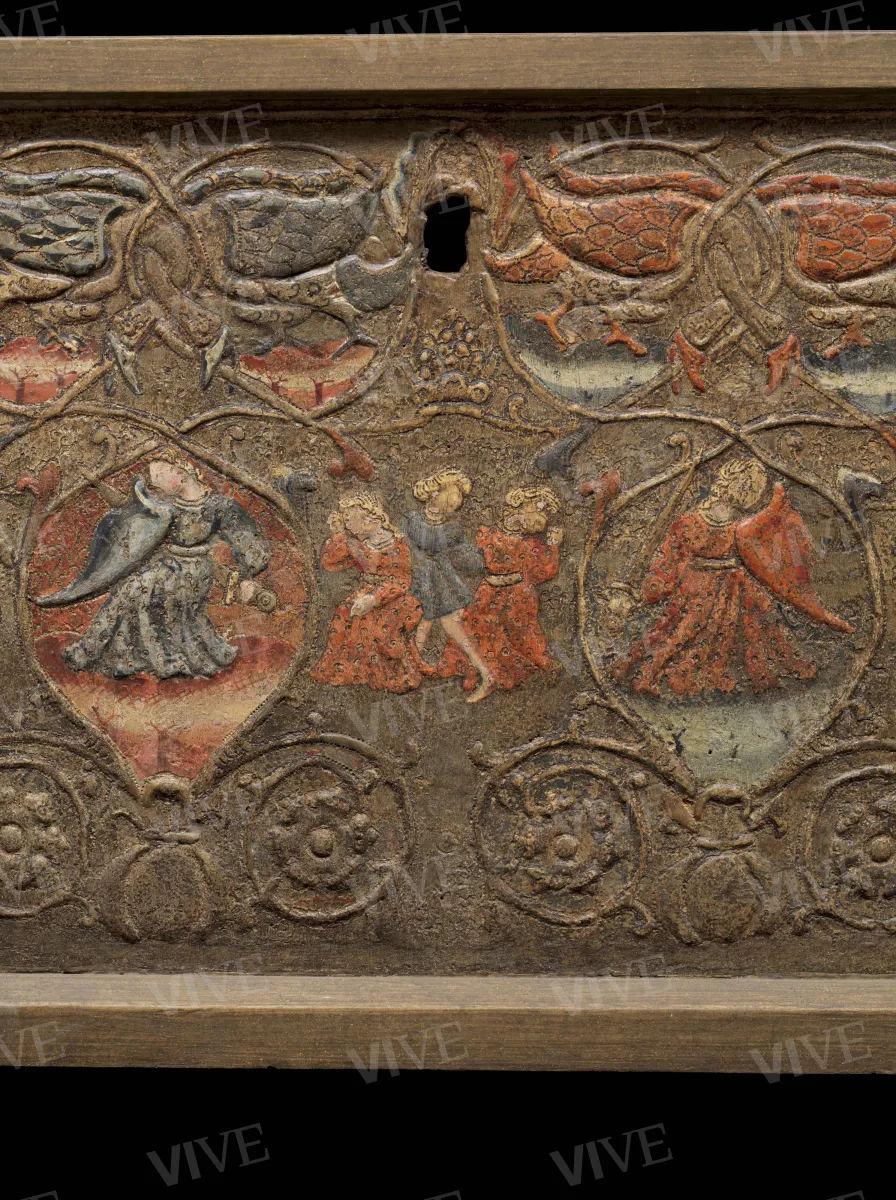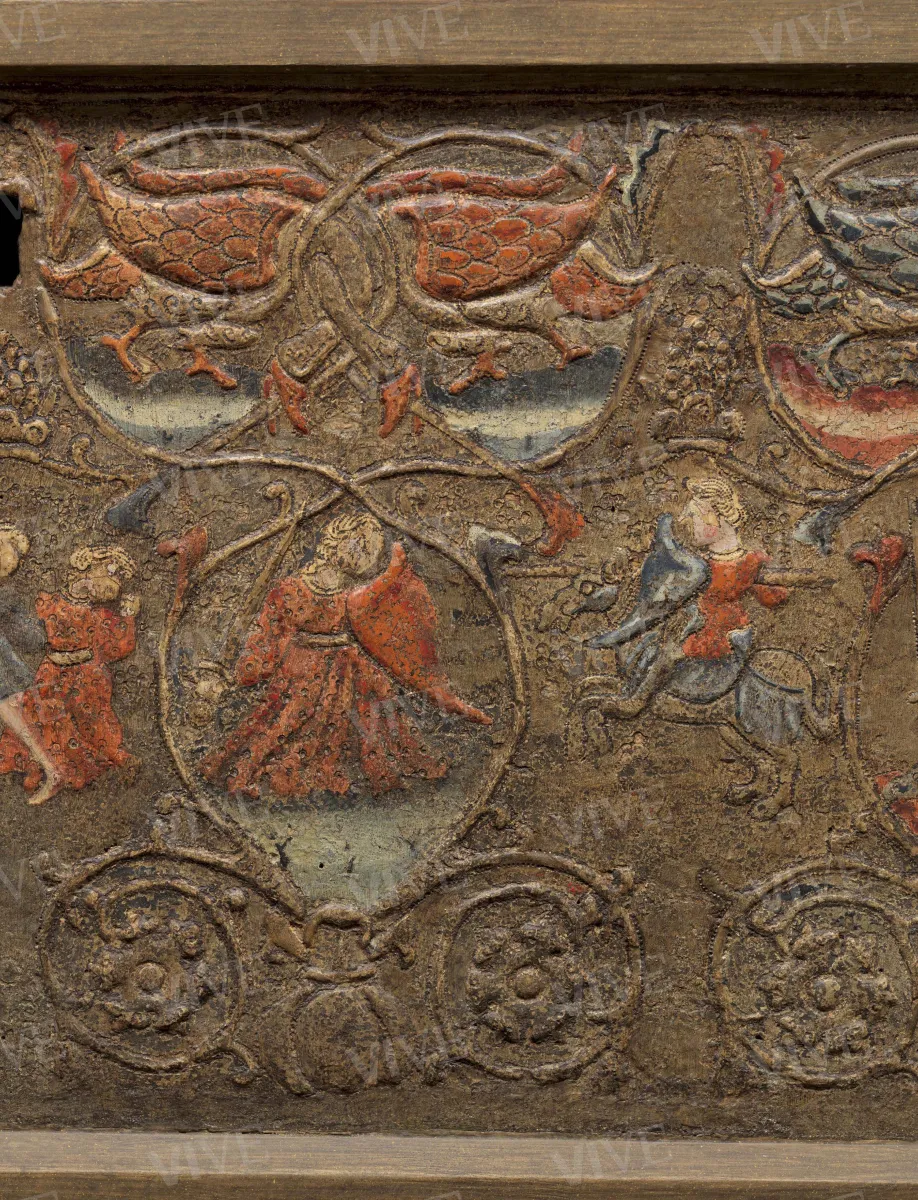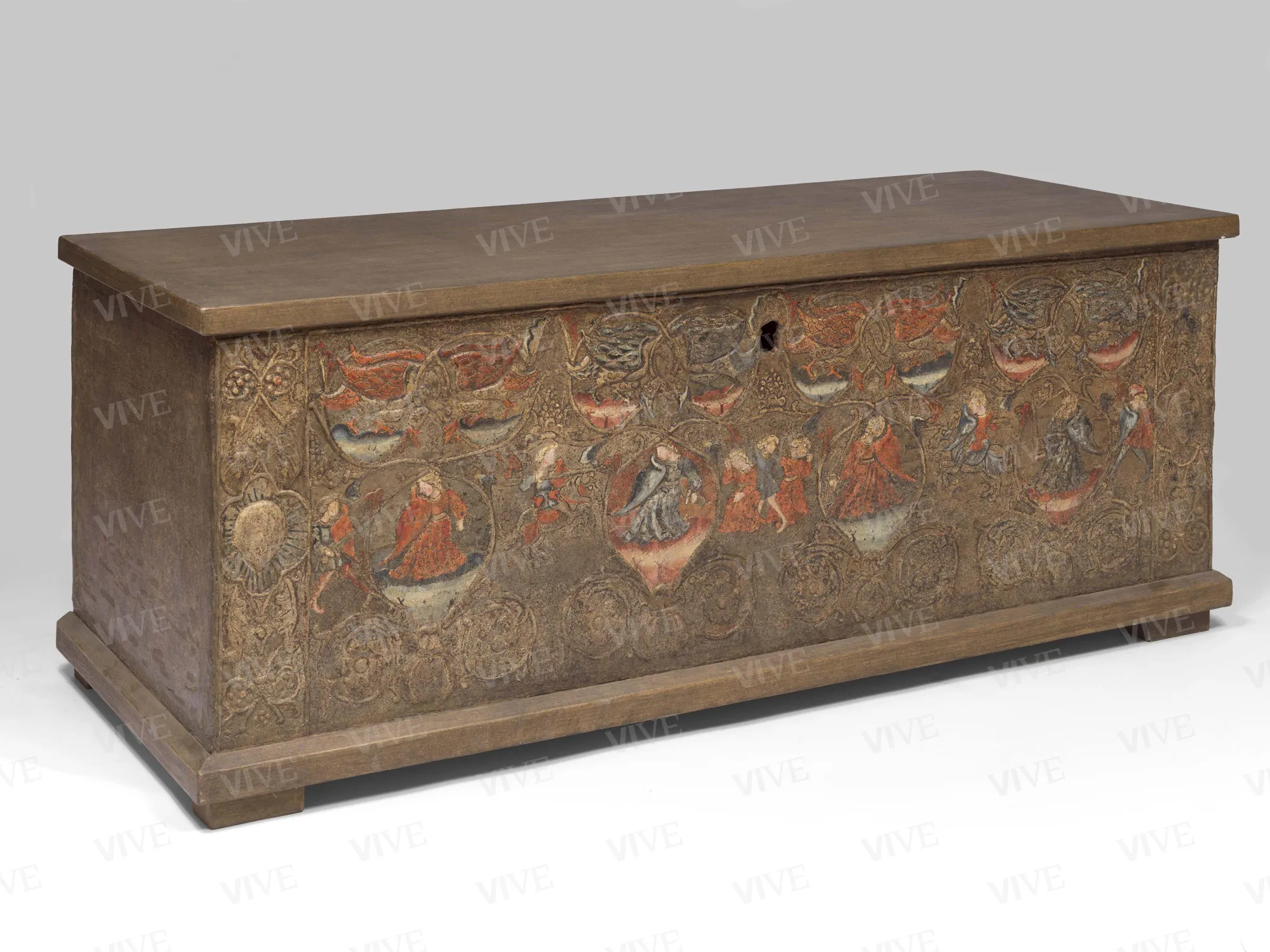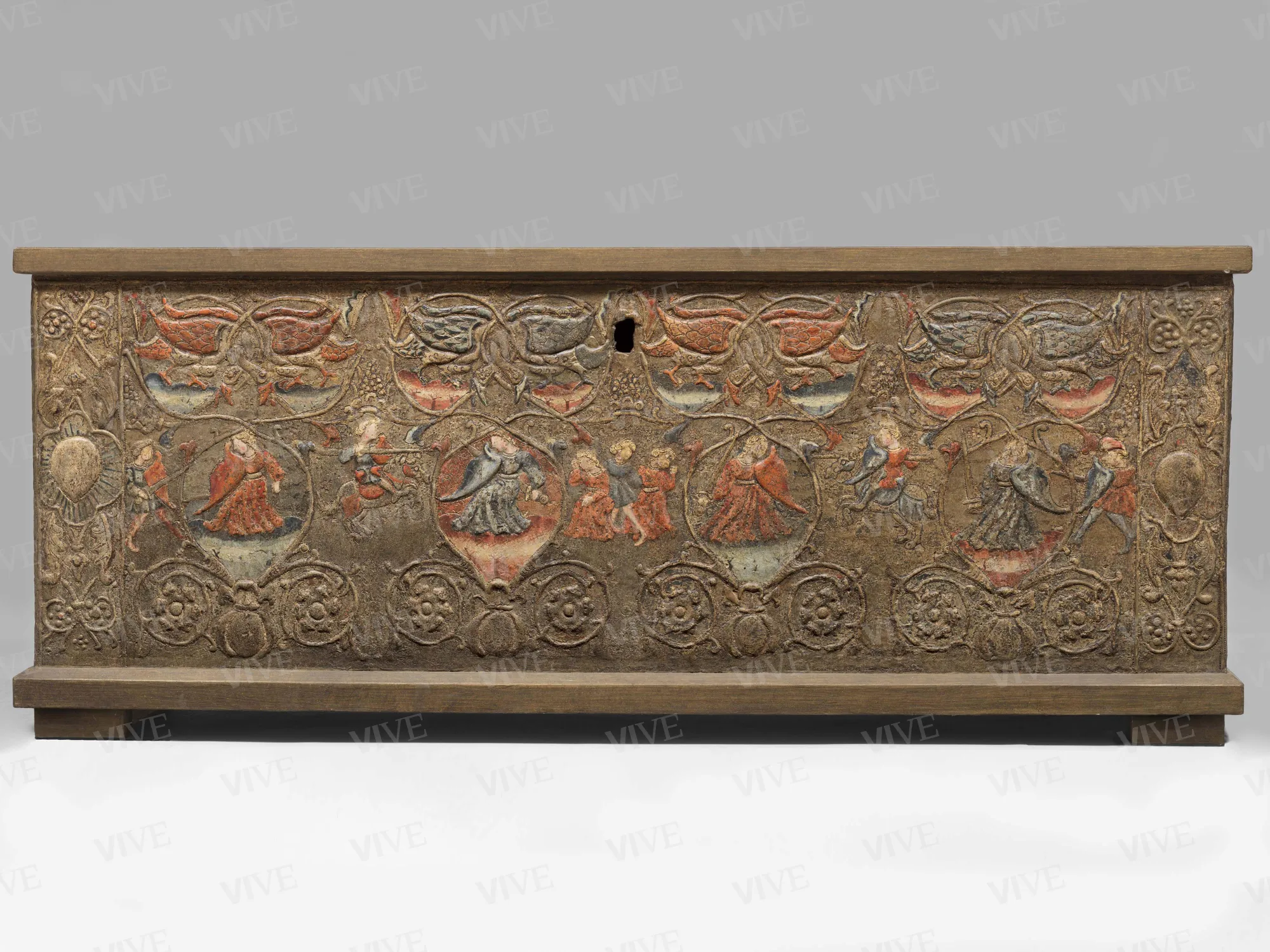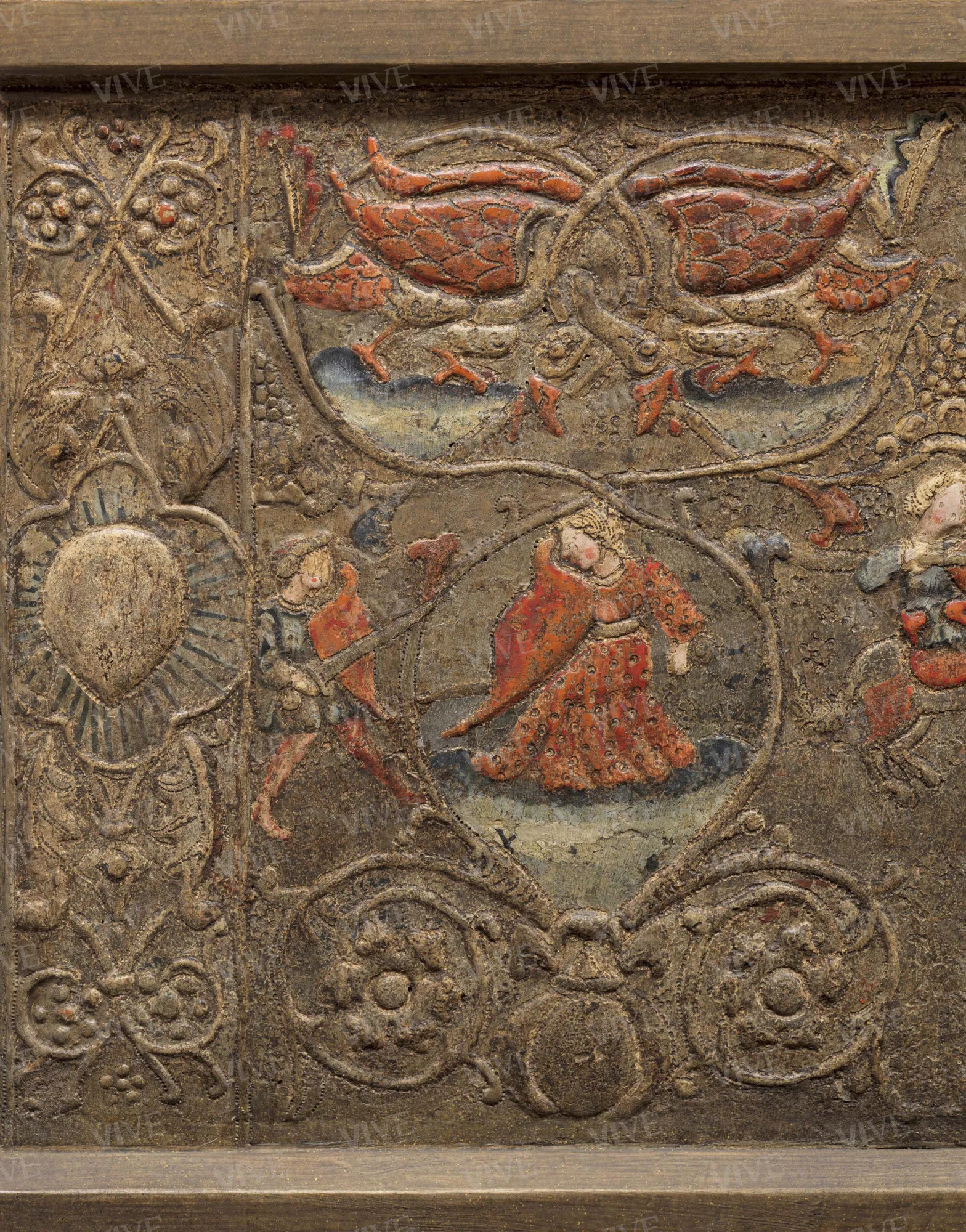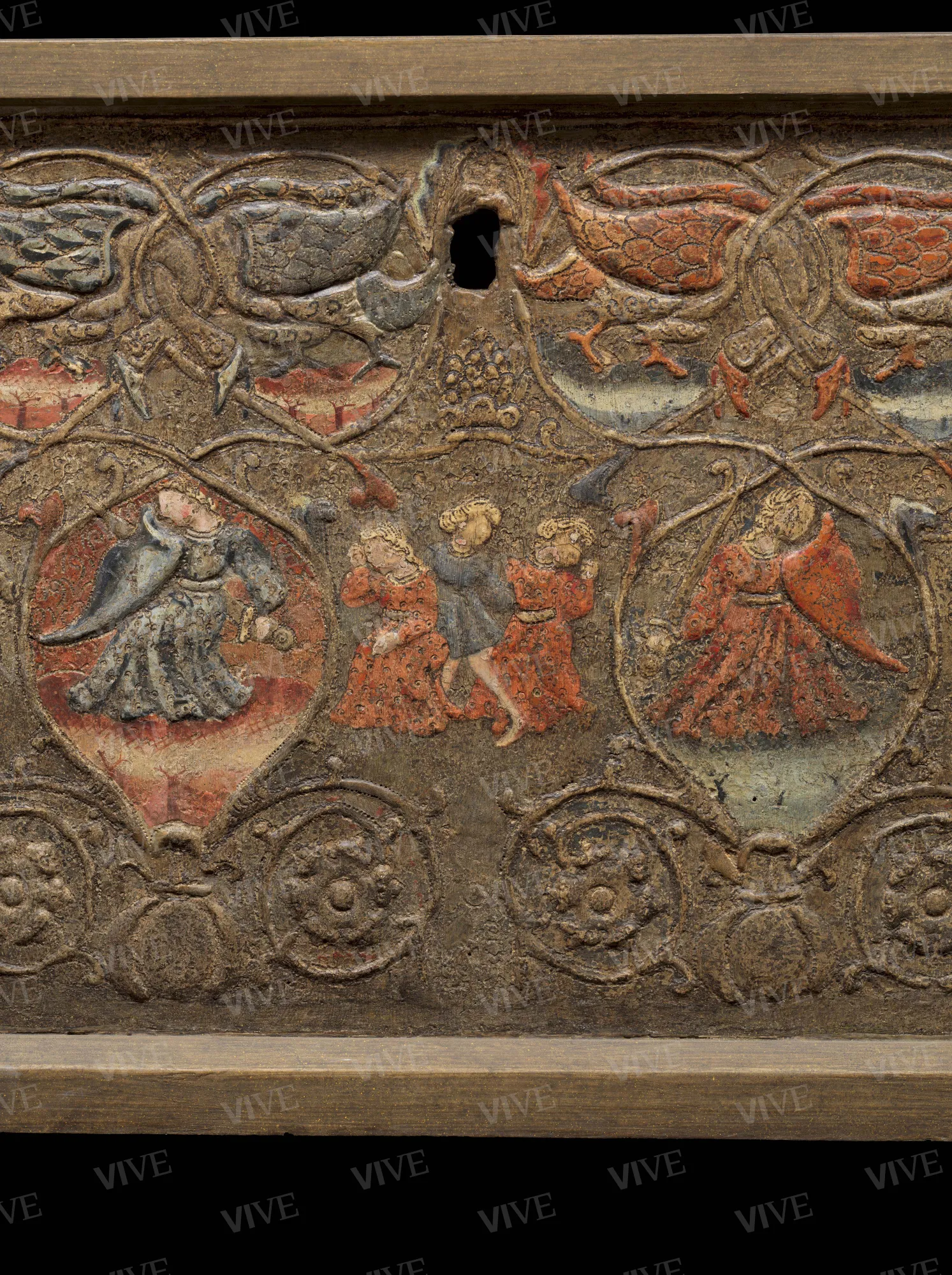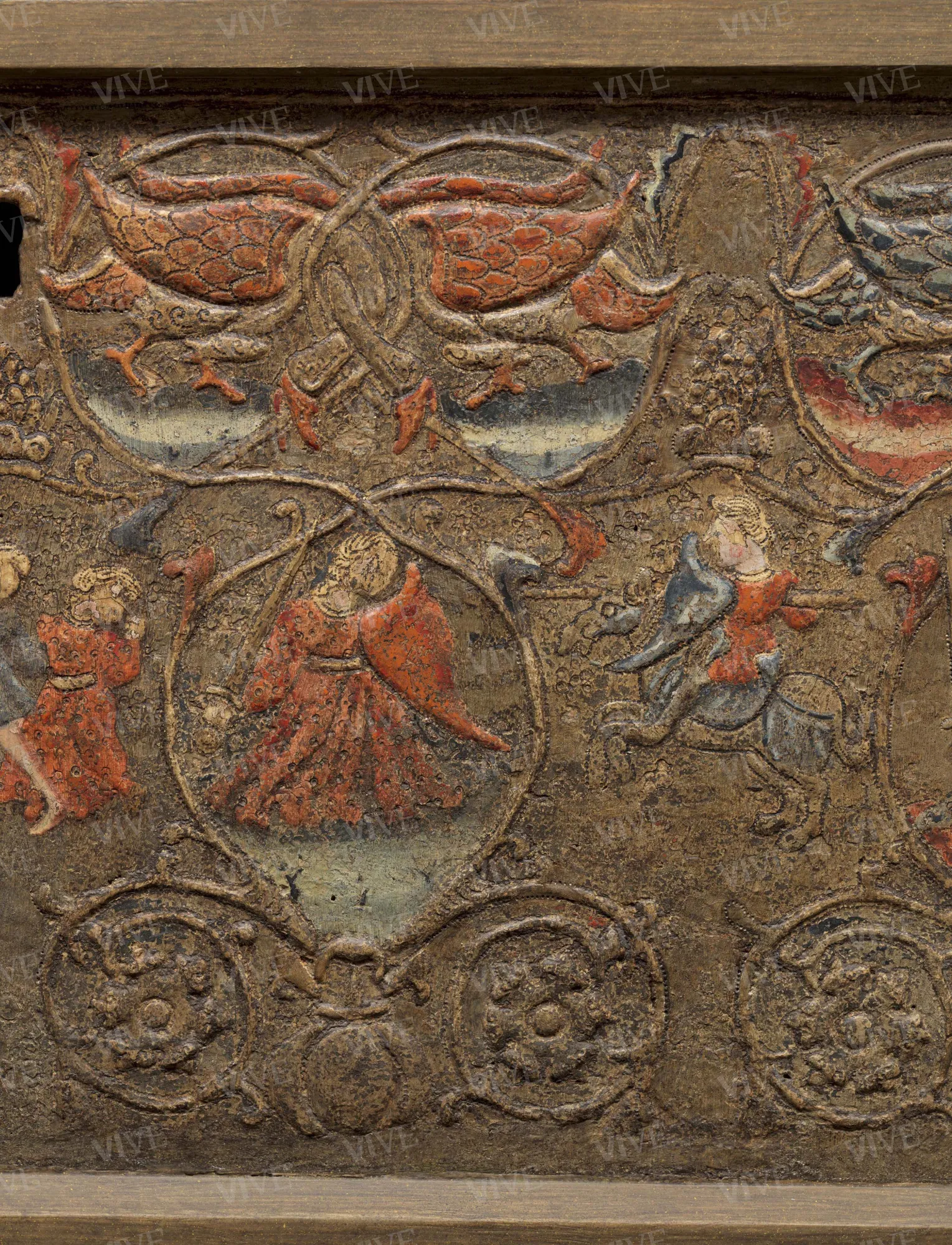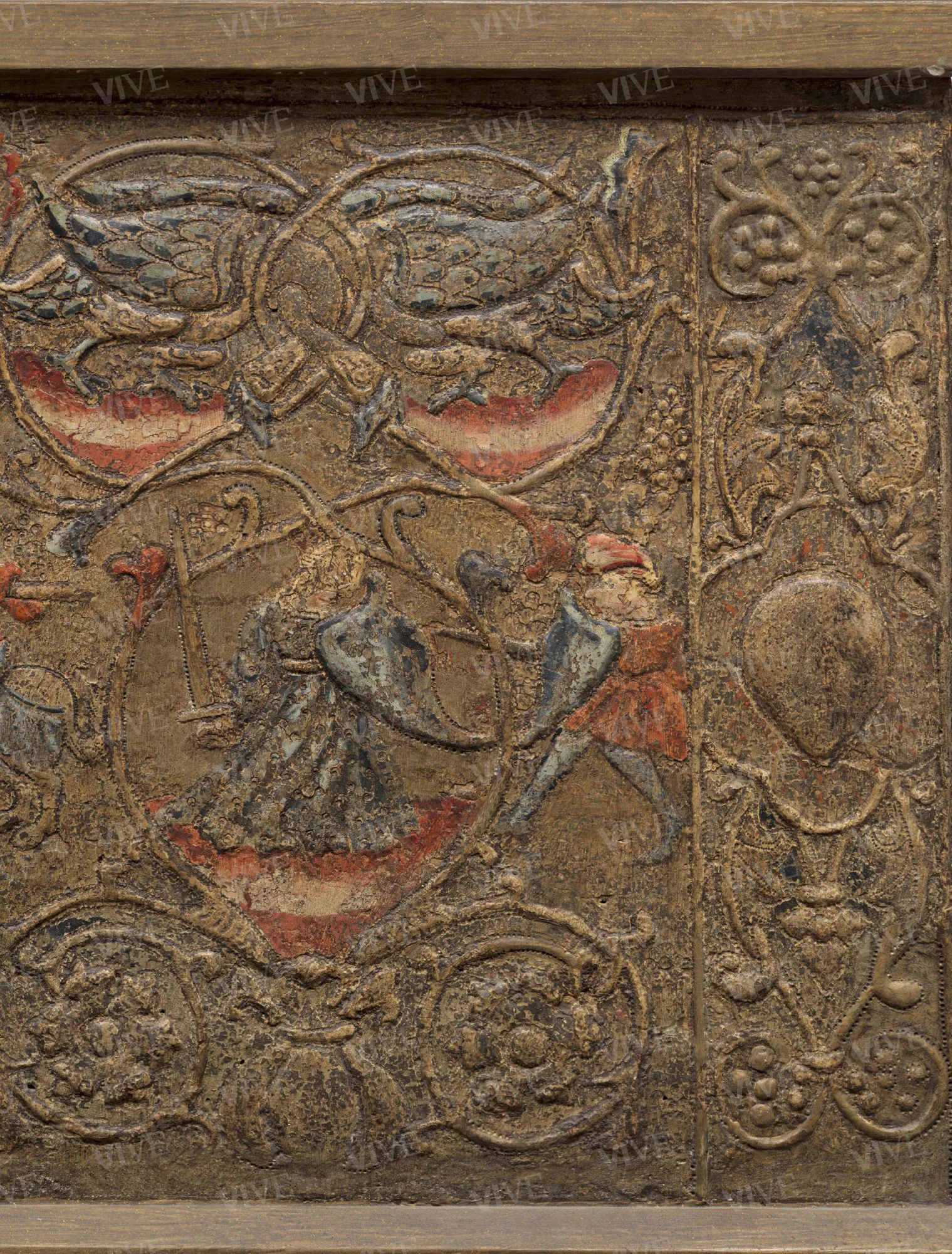Marriage cassone
Northern Italy First half of the 15th century
This small cassone, crafted in northern Italy during the first half of the fifteenth century, was intended for a wedding. This can be inferred not only from the two shields originally displaying the coats of arms of the bride and groom, but also by the selection of decorative subjects, which are allegories of love.
This small cassone, crafted in northern Italy during the first half of the fifteenth century, was intended for a wedding. This can be inferred not only from the two shields originally displaying the coats of arms of the bride and groom, but also by the selection of decorative subjects, which are allegories of love.
Details of work
Catalog entry
The small cassone is adorned solely on the front with a gilded pastille technique, featuring prominent red, white, and blue hues in relief. The sides and lid are painted to mimic wood, giving an appearance of restoration. The front face is flanked by two vertical bands, each embellished with candelabras bearing plant motifs and a central flower with radiating petals. This flower’s shield-like corolla likely displayed the family crests of the bride and groom, one on each side. The presence of both noble arms indicates the piece's nuptial purpose, further emphasized by the decorative theme in the central section of the front. Here, there is a pattern of fruit-bearing racemes originating from the bottom, segmenting the surface into areas that depict scenes of courtly content: on the right and left, there are episodes of combat between footmen, knights, and shield-bearing ladies; in the center, beneath the lock, stands a group featuring a man embracing two weeping women, seemingly offering them consolation.
In the upper register, at each knot of branches, there are two birds, likely swans, whose necks are intertwined. It has been suggested that the courtly scenes may be inspired by the late-twelfth-century chivalrous-satirical poem “Le tournoi des dames” by Hughes III, lord of Oisy, which describes a ladies’ joust (Hermanin 1948). However, in this cassone, the ladies are not fighting against one another but the knights instead. This unusual depiction could be interpreted as the allegory of a love affair. The iconography of the swans with entwined necks might also convey an amorous meaning, as this imagery has been considered a symbol of lust since Vincent de Beauvais’s Speculum Maius.
The cassone, currently attributed to the Tuscan region from the first quarter of the sixteenth century, should actually be considered a fifteenth-century product from northern Italy, as indicated in early catalogues of the Museo di Palazzo Venezia (Hermanin 1948). The cassone entered the museum in 1919 after being purchased from Ugo Jandolo, a member of a prominent family of Roman antique dealers. The dense decoration, which covers the entire surface, is likely derived from ornamental motifs found in textiles and embroidery that were popular in northern Europe and later circulated in northern Italy between the fourteenth and fifteenth centuries. A comparison with a specimen preserved at the house of Cavassa in Saluzzo has also been suggested (Brosio 1971).
Lorenzo Mascheretti
State of conservation
Good.
Restorations and analyses
In 1984, the cassone underwent restoration by the Gebinetto di Restauro of the Museo di Palazzo Venezia. The wood and pastille decoration, which had become detached from the support in multiple areas, were cleaned and consolidated. Additionally, traces of color and gilding were stabilized (OA report on the work: Rome, Archivio storico, Museo di Palazzo Venezia).
Provenance
Rome, Ugo Jandolo, before 1919;
Rome, Reale Galleria d’Arte Antica;
Rome, Museo di Palazzo Venezia, purchased January 1919.
References
Pedrini Augusto, L'ambiente, il mobilio e la decorazioni del Rinascimento in Italia, Torino 1925, p. 81;
Hermanin Federico, Il Palazzo di Venezia, Roma 1948, p. 364;
Brosio Valentino, Il mobile italiano, Roma 1971, p. 62, fig. 4.


